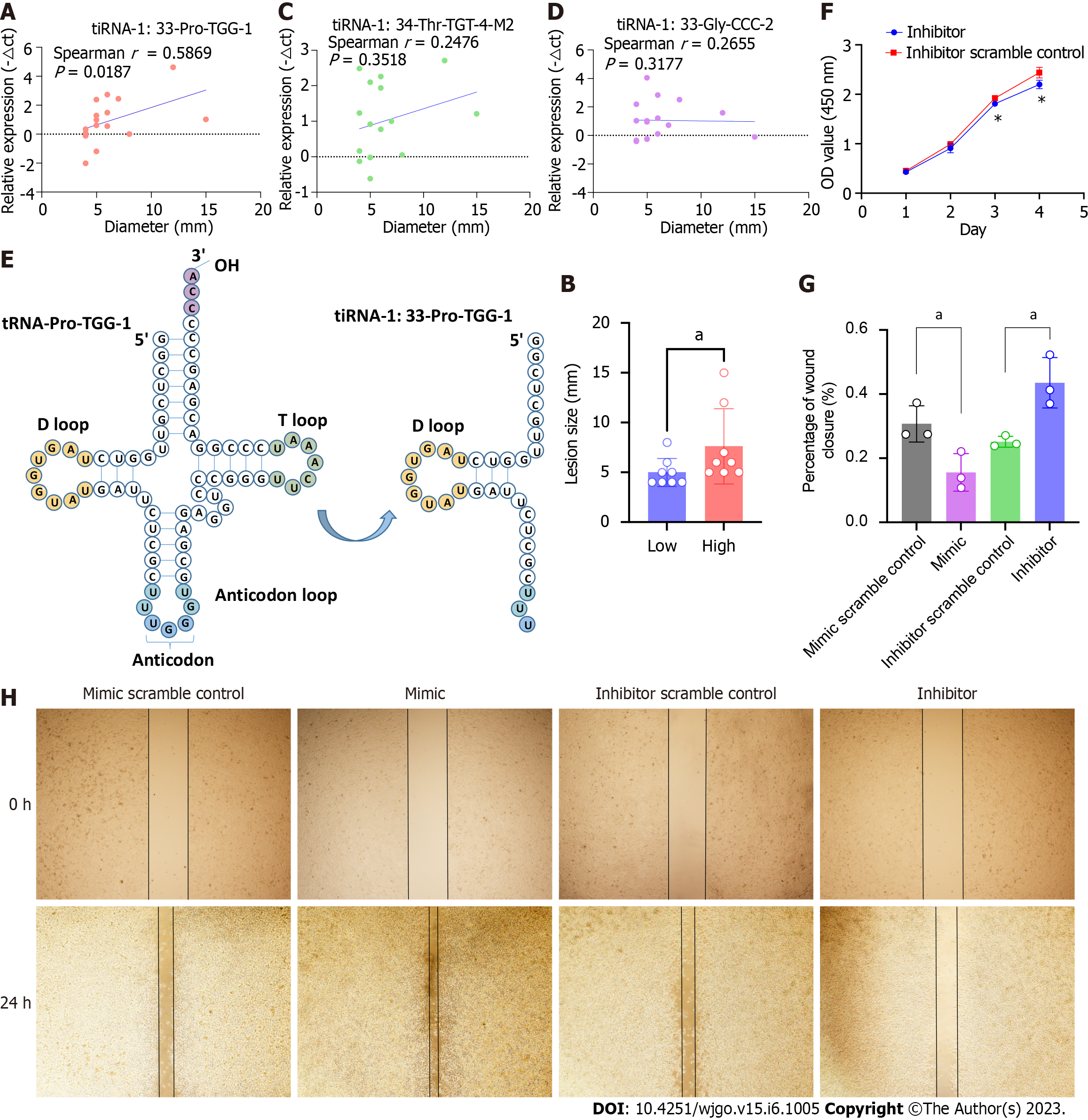Copyright
©The Author(s) 2023.
World J Gastrointest Oncol. Jun 15, 2023; 15(6): 1005-1018
Published online Jun 15, 2023. doi: 10.4251/wjgo.v15.i6.1005
Published online Jun 15, 2023. doi: 10.4251/wjgo.v15.i6.1005
Figure 4 Transfer RNA halves-1:33-Pro-TGG-1 is associated with lesion size and promotes oncogenesis in colorectal cancer cells.
A: Correlation analysis of the lesion sizes and expressions of transfer RNA halves (tiRNA)-1:33-Pro-TGG-1 of SSLs. The X-axis represents the diameter of the lesion and the Y-axis represents the expression level of tiRNA-1:33-Pro-TGG-1. B: Lesions in the tiRNA-1:33-Pro-TGG-1 high-expression group are larger than that of the low-expression group. Lesions are divided into high- and low-expression groups based on the median tiRNA-1:33-Pro-TGG-1 expression levels. The lesion sizes are compared between the two groups. C and D: Correlation analysis of lesion sizes and the expressions of tiRNA-1:34-Thr-TGT-4-M2 and tiRNA-1:33-Gly-CCC-2 of SSLs. E: 5′tiRNA-Pro-TGG is a type of 5′tiRNA that originated in tRNA-Pro-TGG-1. F: 5′tiRNA-Pro-TGG knockdown suppressed the proliferation of RKO cells compared to that of the scramble control as determined by CCK-8 assays. G and H: Wound-healing assays demonstrated that the overexpression of 5′tiRNA-Pro-TGG promotes cell migration and knockdown of 5′tiRNA-Pro-TGG inhibits cell migration when compared to those of the corresponding scramble control, respectively. The asterisk indicates a significant difference between the two groups (aP < 0.05). SSLs: Sessile serrated lesions; tiRNA: Transfer RNA halves.
- Citation: Wang XY, Zhou YJ, Chen HY, Chen JN, Chen SS, Chen HM, Li XB. 5’tiRNA-Pro-TGG, a novel tRNA halve, promotes oncogenesis in sessile serrated lesions and serrated pathway of colorectal cancer. World J Gastrointest Oncol 2023; 15(6): 1005-1018
- URL: https://www.wjgnet.com/1948-5204/full/v15/i6/1005.htm
- DOI: https://dx.doi.org/10.4251/wjgo.v15.i6.1005









